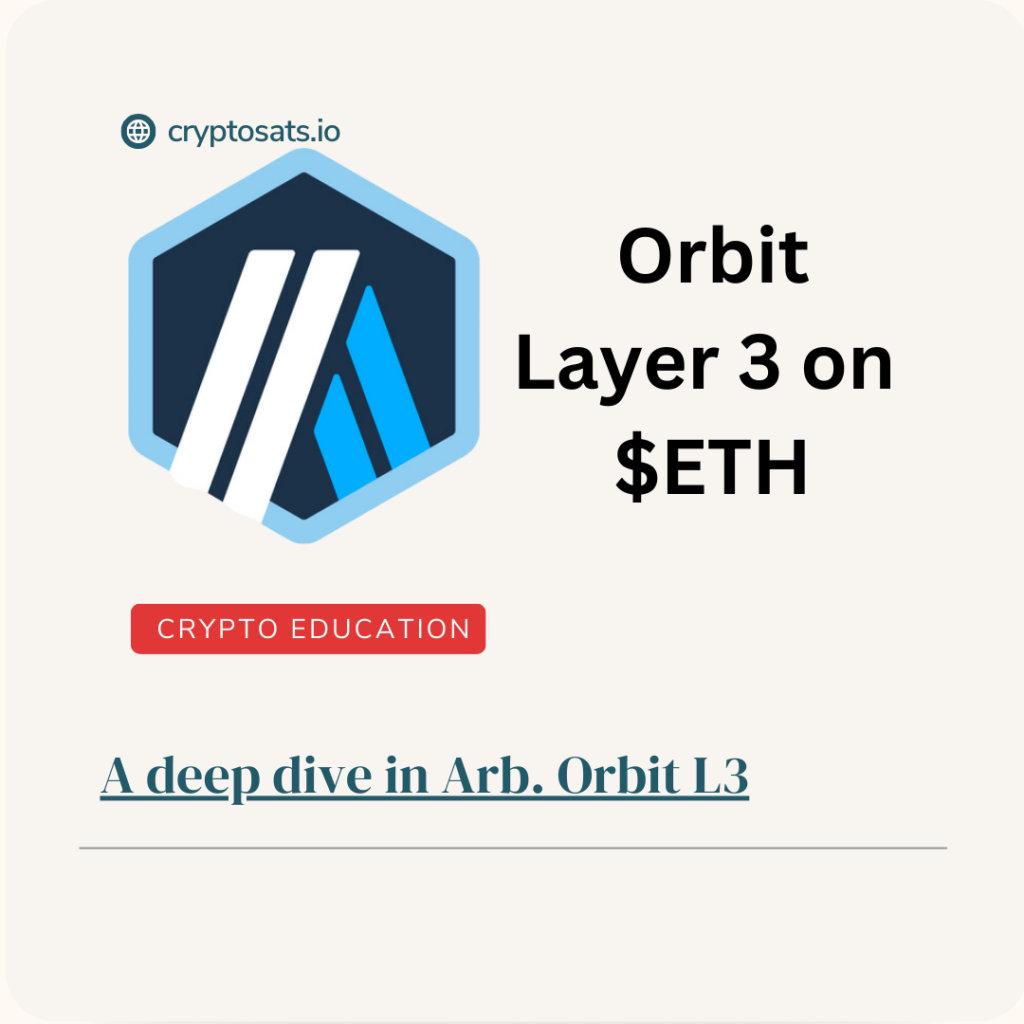Arbitrum Orbit is one of the latest and most promising Layer 2 scaling solutions in the world of blockchain technology. It aims to address the scalability issues faced by popular platforms like Ethereum, Polkadot, and others.
This innovative protocol utilizes optimistic rollups to increase transaction throughput without compromising on security or decentralization. In simpler terms, Arbitrum Orbit allows for faster and cheaper transactions while maintaining the trustless nature of blockchain.
With its growing popularity, it is essential for beginners to understand the inner workings of Orbit and how it differs from other scaling solutions. In this guide, we will delve into the functions of Arbitrum Orbit, its advantages and disadvantages, and why it has become a game-changer in the world of decentralized finance (DeFi). So, let’s dive in and explore Arbitrum Orbit together!
What is Arbitrum Orbit?
Arbitrum Orbit is a layer-3 solution enabling developers to launch custom blockchains on top of Arbitrum’s layer-2 rollups like Arbitrum Nova and Arbitrum One. It allows for the creation of dedicated chains with tailored throughput, privacy, and governance, offering an alternative for applications requiring greater customization beyond general-purpose rollups.
Orbit chains can settle transactions on Ethereum or any layer-2 solution within the ARB ecosystem, maintaining interoperability and leveraging Ethereum’s security.
Key features include customizable protocol logic, reduced gas fees, and enhanced user experience through innovations like Arbitrum Nitro and elastic block times. Orbit empowers a wide range of applications, from gaming to NFTs, by providing a flexible, scalable, and cost-effective blockchain development platform.
A beginners guide to understand what the Arbitrum Orbit chain does
Orbit represents a pivotal advancement in blockchain scalability and flexibility. It is designed to meet the evolving needs of developers within the Ethereum ecosystem. As Ethereum strives for greater scalability through rollups. The rollups execute transactions off-chain to reduce gas fees and improve throughput, there arises a need for more customizable solutions.
This is where Arbitrum Orbit steps in. Introducing a layer-3 solution that allows teams to launch their custom blockchains on top of Arbitrum’s layer-2 rollups. Such as Arbitrum Nova and Arbitrum One.
The essence of Orbit
The essence of Orbit lies in its ability to enable developers to create blockchains that are tailored to their specific needs. Doing this without sacrificing interoperability within the Arbitrum ecosystem.
These Orbit chains provide an environment where developers can significantly modify throughput, privacy settings, and governance mechanisms. This way devs can suit their dApps’ unique requirements. Unlike other solutions, Orbit chains allow for settling transactions not just on Ethereum itself but also on any layer-2 solutions offered by Arbitrum. Thus leveraging the security and robustness of Ethereum’s network.
Arbitrum Orbit operates on the principle of flexibility and performance optimization. It departs from the need to prioritize Ethereum compatibility, focusing instead on enhancing the user experience and the application’s performance.
This is facilitated through advanced technical upgrades like Arbitrum Nitro. Which introduces cost-effective, interoperable, and EVM-compatible solutions, alongside innovations like elastic block times to manage gas costs efficiently.
By offering a platform for building custom blockchains with tailored protocol logic. Arbitrum Orbit paves the way for a multitude of applications, including gaming platforms, crypto derivatives, and NFT marketplaces. These apps benefit from reduced gas prices, predictable gas pricing, and an optimized user experience.
As the blockchain space moves towards a multi-chain world. Arbitrum Orbit stands as a testament to the possibilities of creating interconnected, yet independent, blockchain tailored solutions.
Pros of Arbitrum Orbit:
- Customization: Developers can tailor blockchains to specific application needs, optimizing throughput, privacy, and governance.
- Reduced Gas Fees: Dedicated chains reduce competition for block space, leading to predictable and lower gas fees.
- Enhanced User Experience: Features like elastic block times and potential gas fee abstraction improve UX and transaction speeds.
- Interoperability: Despite customization, Orbit chains remain connected to the broader Arbitrum and Ethereum ecosystems, ensuring seamless interaction.
Cons of Arbitrum Orbit:
- Complexity: The flexibility and customization options might increase the technical barrier to entry for developers.
- Trust Assumptions: AnyTrust technology, while cost-effective, introduces trust assumptions that may not align with all decentralization purists.
- Limited Track Record: As a newer layer-3 solution, its long-term effectiveness and security are yet to be fully proven in diverse real-world applications.
FAQs
Should I choose Arbitrum Orbit for my project?
The answer depends on the needs and goals of your project. If customization, reduced gas fees, and improved user experience are essential factors for you. Then Orbit might be a suitable solution.
Is Orbit the only layer-3 scaling solution on Ethereum?
No, there are other layer-3 solutions like Optimism, Polygon, and xDai that offer similar features. However, Orbit stands out due to its flexibility and focus on performance optimization.
How does Orbit compare to other layer-3 solutions?
While all layer-3 solutions aim to improve Ethereum’s scalability, they differ in their approach and offerings. Some prioritize compatibility with Ethereum, while others focus on customization and performance. Orbit stands out due to its customizable protocol logic, reduced gas fees, and enhanced user experience through innovations like Nitro.
Conclusion
Orbit opens up new possibilities for developers within the Ethereum ecosystem by offering a customizable layer-3 solution that optimizes for performance without sacrificing interoperability.
With features like flexible block times, adjustable throughput, and dedicated chains for specific applications, Arbitrum Orbit provides a competitive edge to dApps in this ever-evolving blockchain landscape.
As more developers explore the potential of layer-3 solutions, we can expect to see exciting use cases emerge on the Arbitrum Orbit chain.
So take the leap and explore what Arbitrum Orbit has to offer for your next decentralized application. The possibilities are endless!
For more info about #Arbitrum Orbit check: https://arbitrum.io/orbit
